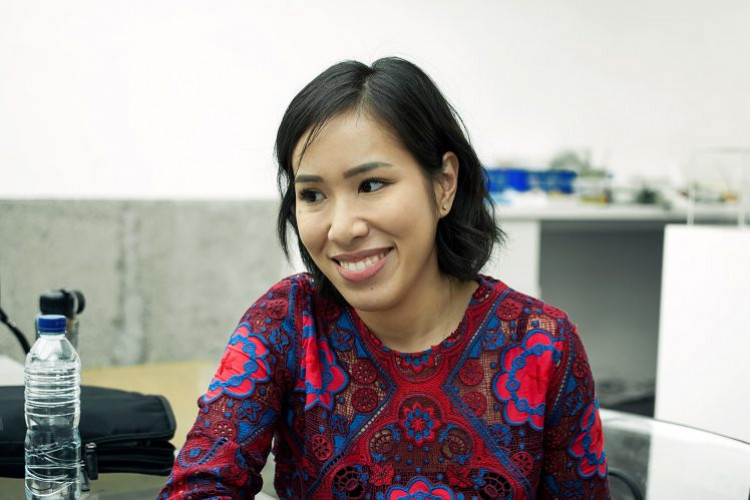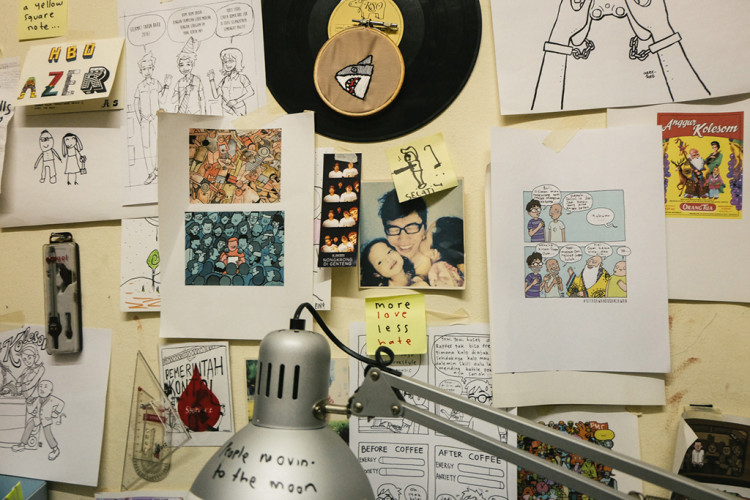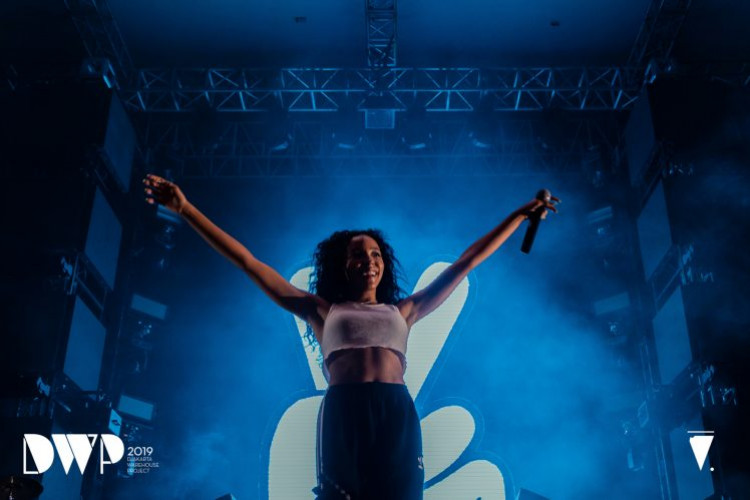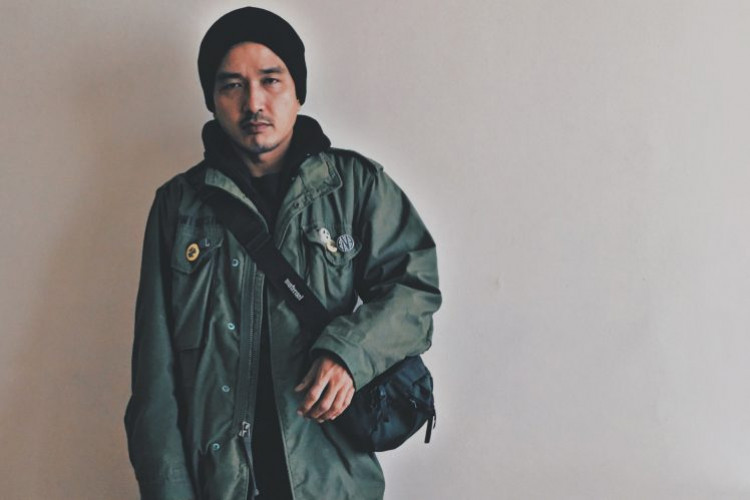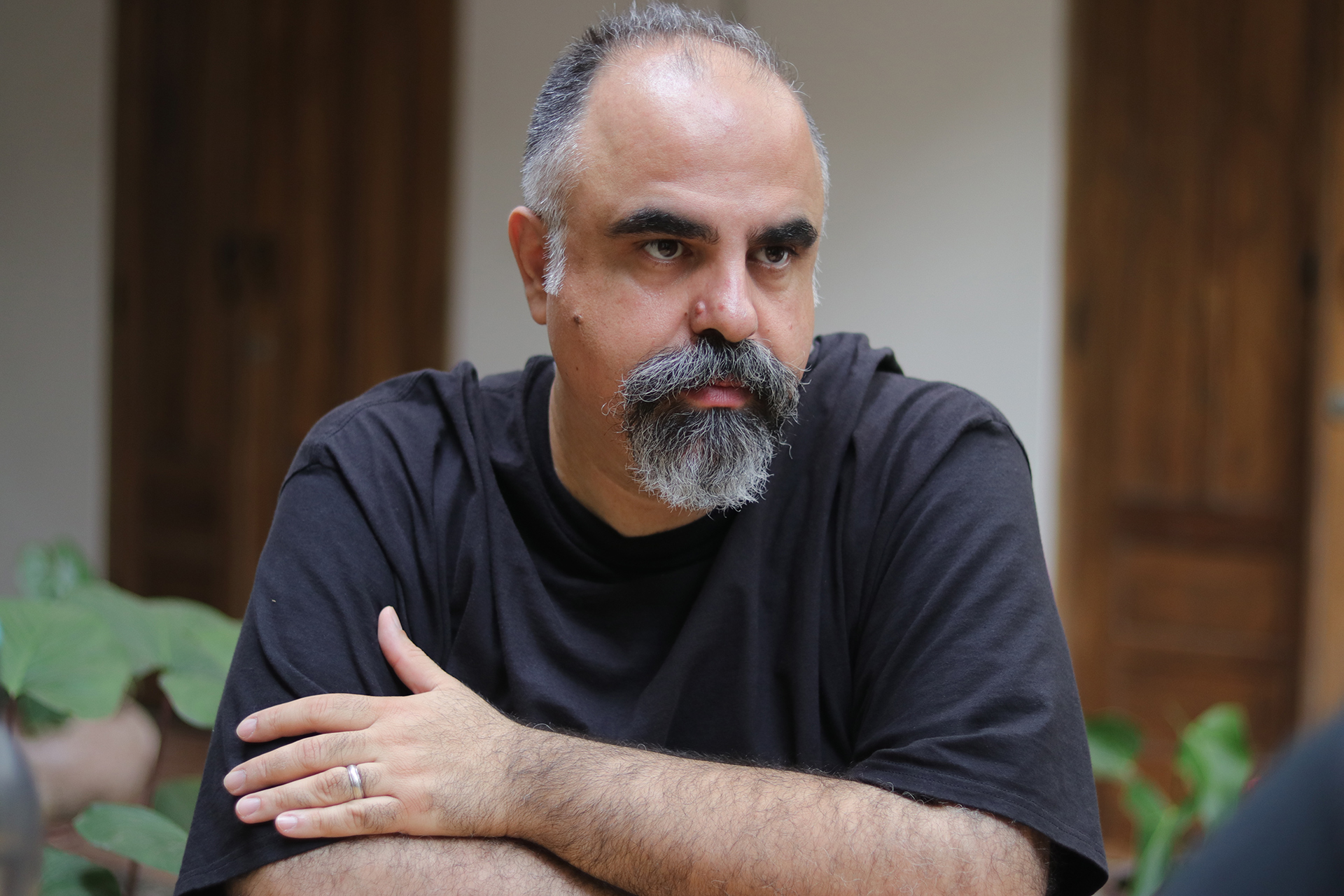
Sote on Electronic Scene in Iran, Explorations and Sound Structures
A dialogue with Iranian electronic music composer and sound artist, Sote.
Words by Whiteboard Journal
Teks: Mega Nur
As one of Iranian foremost electronic musicians, Sote is known for his all-synthetic sound structures. By experimenting Persian music with electro-acoustic, soon he took the underground music scene in awe. Offering mind-bending compositions, Sote had his releases on Warp and Sub Rosa among others, which honed him to be a vital purveyor of leftfield music to a wider audience. Earlier this month, we had a chance to meet him in Yogyakarta during Nusasonic and talk about a lot of things, from his first interaction with music to music formula.
How was your first interaction with music?
That was in Germany, actually. Because I was born in Germany, but then I lived in Iran until the age of 11. So when I moved to Germany at that time, I think it was during my early high school years in Germany, a couple of friends and I started a band, a high school band. We basically wanted to make electronic music and we were into electronic music, industrial band like Front 242, and music that we were listening to was Depeche Mode.
At first we were trying to cover songs from those bands and then slowly it evolved into us making our own music. And yeah, so we just started. We had some keyboards and synthesizers and we used cassette tape decks as a sampler. That’s how we started, just for fun to make our own music, then we performed a couple time at our high school events. One of the first songs that we covered was “Headhunter” by Front 242.
Could you tell us briefly about how you started this project as Sote?
“Sote” in Farsi means sound. To be honest with you I don’t remember the very first time I used “Sote”, but I remember on one of my records I used the name “Atax”. But then, underneath it I had “Sote Production” written and printed on it. Again, like the word “Sote”, I always liked it because I love sound. My compositions, my music is always about sound. At first, it’s never about melody or harmony or anything like that, I always think with sound structures. So that’s what I’m passionate about.
So Sote, I think, started with one of my first radio releases. And then I used it on some projects. And then I didn’t use it on other projects as I had different monikers, I’ve used my own name Ata Ebtekar. So, it always goes back and forth. When in the past, maybe 6, 7, 8 years, I played music as Sote more often.
There’s some sort of rebellion in experimental music. Is that why you explore this type of music to tell your stories?
Maybe in a way, for me the most important thing in making music is I always want to make the kind of music that I haven’t heard before, that hasn’t existed. So I always make the kind of music that I want to listen to, but I can’t go on and buy it because it is not there. So I am always interested in new music, new sounds. In a way, it might be rebellion because I’m very much anti-copying, anti-following the formula, anti-just doing things over and over again. So, in a way, it might be a rebellion against trends and trendy things and what’s already out there. I think to this date I was like that when I was a teenager and thirty years later I’m still thinking like that.
You were born in Germany but then came back to Iran to make people aware of experimental electronic music. Why there was a need to introduce the music to Iranians?
It’s always been one of my goals to introduce electronic music, synthesizer, sound design, things like that to the Iranian people.
I love my country, I love Iran. I felt like, maybe 10 years ago, nobody really knew about the world of experimental electronic music. Because after the revolution, the country was closed pretty much for a while and there was a war too. So for some reason, experimental electronic music never came in. And because I have such passion for experimental electronic music, it’s always been one of my goals to introduce electronic music, synthesizer, sound design, things like that to the Iranian people. So it was natural for me too. When I go back there, it was one of the main reasons why I wanted to go back. Besides other reasons, but to basically make people aware of this whole thing through different things, through doing events, concerts, teaching.
Has the political situation or environment in Iran affected your work?
Not really. Not my work directly. Indirectly, probably I can’t say no, conceptually maybe to some extent. But directly as far as the sound of it is concerned, definitely not, I wouldn’t say so because it’s not how I compose. My compositions always start with; again, sounds for me. I obviously think about political and social stuff every day and it bothers me just like anybody else. I’m very affected by it and I care about it, but I don’t think it necessarily has an effect on my work and the production of my work, the sound of it, in a direct way.
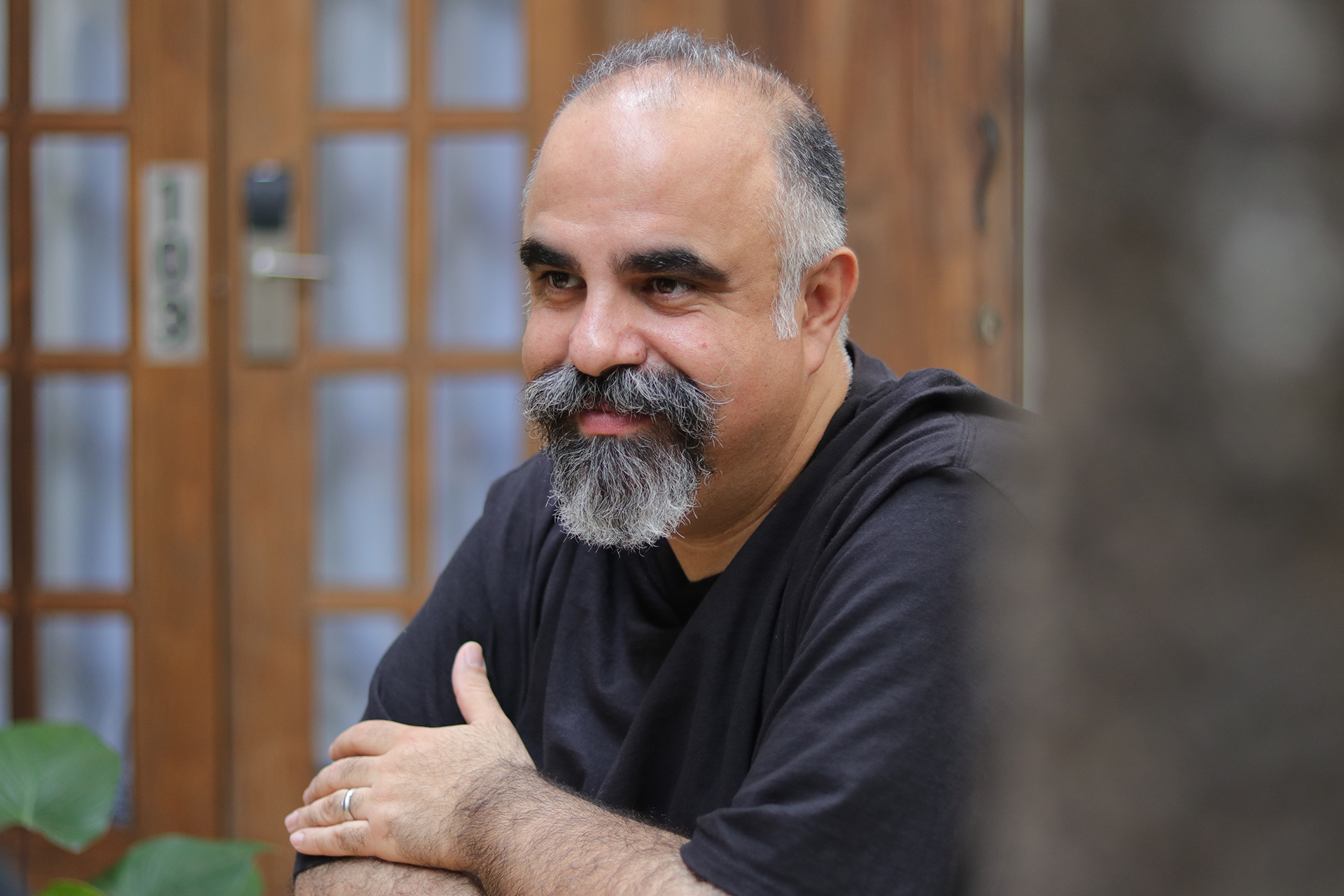
Foto: Reyhan Reynardo
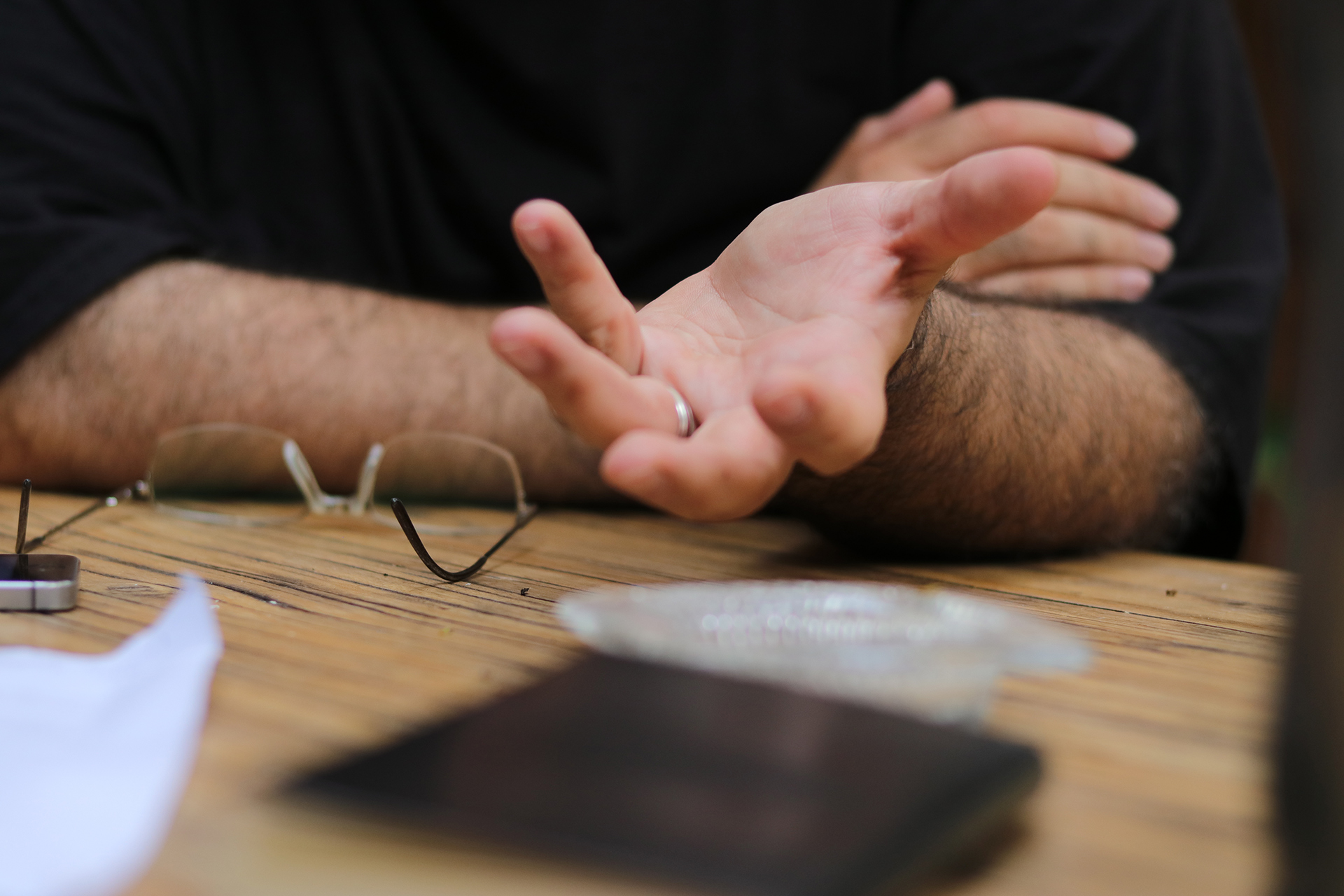
Foto: Reyhan Reynardo
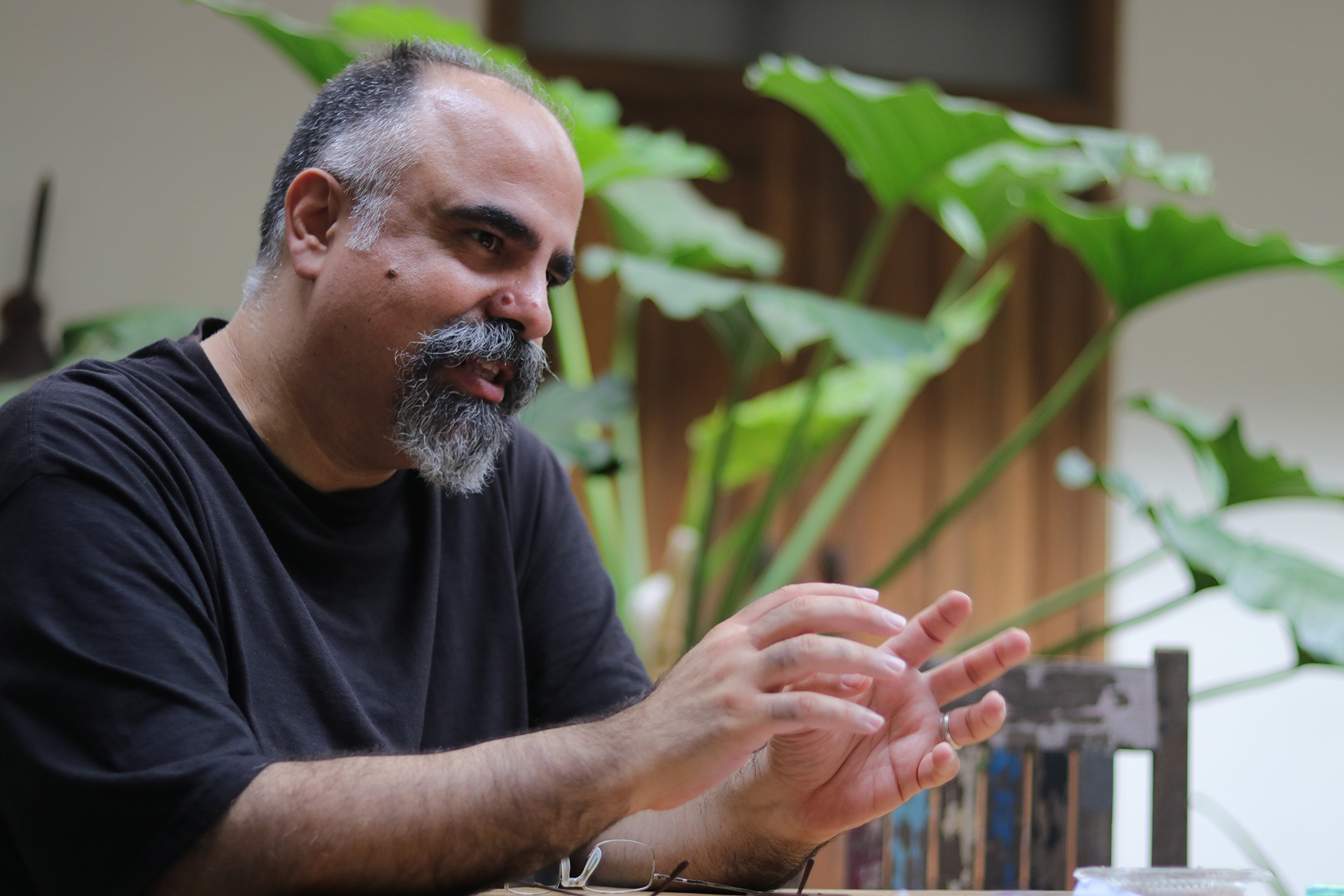
Foto: Reyhan Reynardo
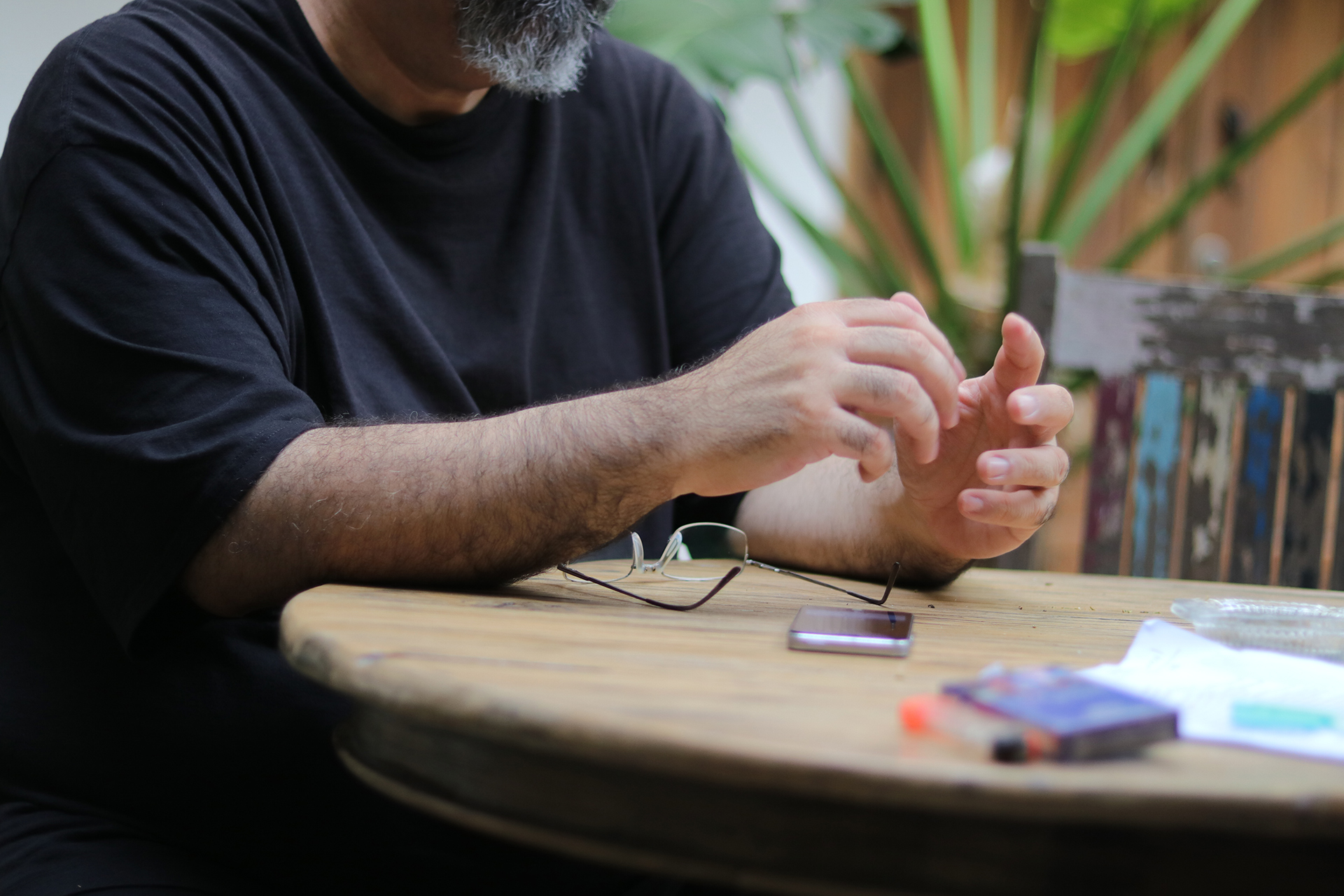
Foto: Reyhan Reynardo

Foto: Reyhan Reynardo

Foto: Reyhan Reynardo

Foto: Reyhan Reynardo

Foto: Reyhan Reynardo
Foto: Reyhan Reynardo
Distribution has always been an issue in music. As a creator, especially underground music, how hard is the obstacle for you in order to expose your works?
I don’t know, I don’t find it that hard actually. At first I thought it would be pretty difficult to expose this kind of music to people, but it has been great actually. People have been very positive about it, the reactions are great, people are very enthusiastic about this kind of music when they come to events – even if they haven’t listened to this kind of music which is really hard to digest. It’s not easy music. But they are very open, and they get excited and they keep coming back and it’s been great. Like especially in Iran when we do events, usually the turnout of the people is actually pretty big, it’s good.
I used to live in San Francisco area, over there, sometimes nobody shows up. Or it’s really hard to keep people. If they are not really into experimental music, it’s hard to keep them at events, they just walk out or whatever. But in Iran, it hasn’t been like that, it’s been really really good and positive.
You make compositions using sounds of acoustical and electronic origins, and also seeking to expand such traditions. What’s the urgency of presenting tradition with experimental packaging?
If I have to categorize the work that I do now, there are two styles or maybe paths that I’m exploring. One is all-synthetic, no acoustical instrument. And the other one is acoustic and electronic. The whole thing about electro-acoustic for me is been going on for about 10 years or longer. I’ve explored doing the whole Iranian electro-acoustic music for a while now. This time has been different. I’ve had different projects, different albums. With this one it’s been – what I wanted to do is I wanted to basically do something that has been traditional for a long time, mixed with something very contemporary. But at the same time, I didn’t want either one of the elements to overpower the other one. It wasn’t about doing something traditional with electronic necessarily, it was supposed to become something new, something beyond. It was a challenge for me for the longest time.
I used to live in San Francisco area, over there, sometimes nobody shows up.
With the last album, “Sacred Horror in Design”, the idea was to keep the balance of this two and not break the tradition, not break the Iranian scale system, the interval between notes, the spaces between notes and keep them the way traditional musicians would. But also, make them work perfectly with the contemporary electronic parts. And at the same time, not deconstruct them and have them become one new thing. So that was a challenge and I think after long time I came to that conclusion with the people that I worked with, we came to good results of doing something that’s very hard to understand what’s acoustic and what’s electronic. That’s a good sign, that both have equal importance and they work in harmony together and they don’t destroy each other.
In your recent album, titled “Scared Horror in Design”, you’re talking about the situation of Islamic Revolution back then in Iran. What triggered you to talk about that?
No, it’s not talking about that. But it could be. Conceptually, “Sacred Horror in Design”, if I have to simplify it, is about people doing something in the name of the Holy. For example in the name of God, or it doesn’t have to be God or in the name of whatever they believe in. They could do anything they want, and they think it is the right thing to do, but it’s usually not. They do something and they think they’re right and they don’t look at other perspectives and other alternatives. They’re very blind.
So “Sacred Horror in Design” is something that has been going on for a long time and still going on. And it is something that we are making, we are designing, and it is something horrible, it is disastrous. It can be that. But it has a lot of different meanings.
What triggered me is the current political and social situation, what people are doing with all the killings, all the hurting of each other and everybody is doing it and as if “Oh, we have to do it, because if we don’t do it, something worse is going to happen” in the name of holy and in the name of what’s sacred. For example is sanctions. Sanctions against Iran, or in any country. People let thousands of people die because of sanctions. But then somebody says “Oh, we got to do that because the government is a bad government”. But they don’t really hurt the government, they hurt the people. As simple as that. And nobody says, “What the hell is going on?”, “Why are we doing this?”. So, again, things like that affect my work, but not the sound of it. It’s about the concept.
From your point of view, how far removed is the scene now in Iran, especially in Tehran?
I think it’s growing really fast. And it’s going to a beautiful direction and it’s very positive. In the past 4-5 year things are moving maybe double or triple the speed than anywhere else. But overall I think it’s very promising, it’s very beautiful and many interesting things are happening there, and luckily with collaborations like we did with CTM Festival (Berlin) and the international artists we invited and vice versa, and like when Iranian musicians go out or are developing more and more. We also try to do a lot of workshops, lectures, events, things like that to just keep moving and getting people to involved. Providing a platform for younger artists. It’s really good. It’s small but it’s growing fast. And I think it’s growing in the right direction and in the right way. It’s like the roots are becoming strong. We are not in a hurry, it doesn’t have to be fast, but it’s good, it’s nice.
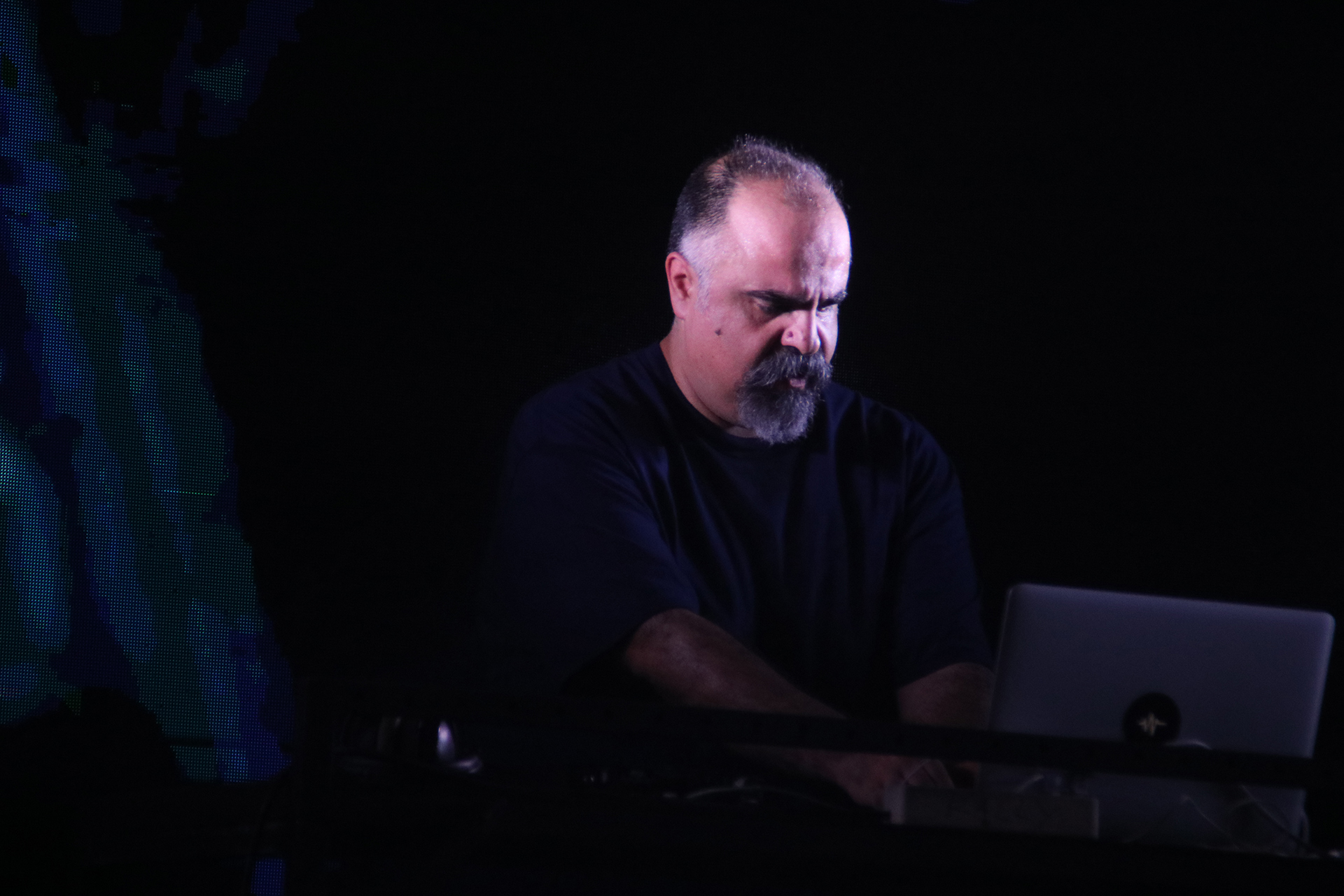
Foto: Reyhan Reynardo
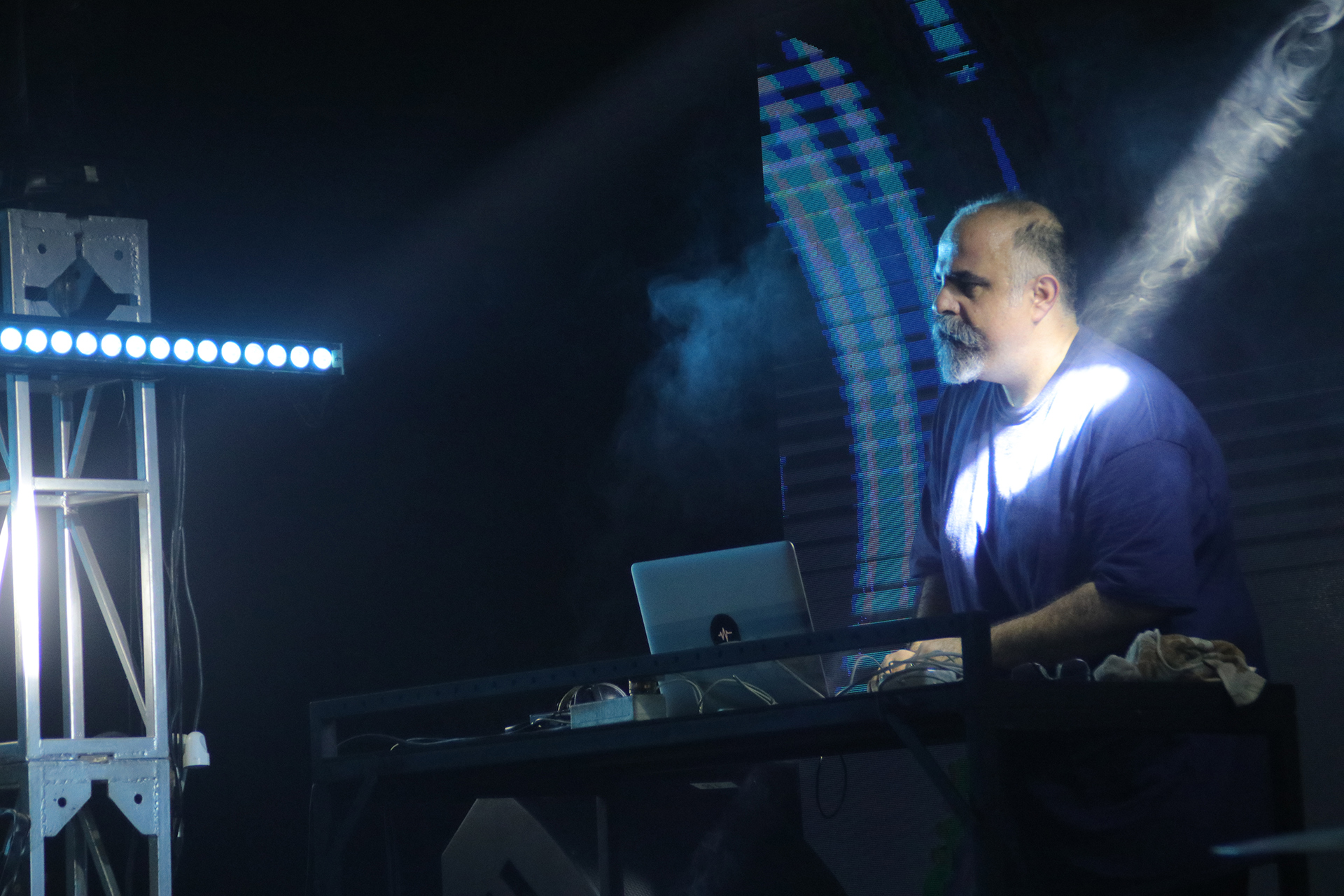
Foto: Reyhan Reynardo
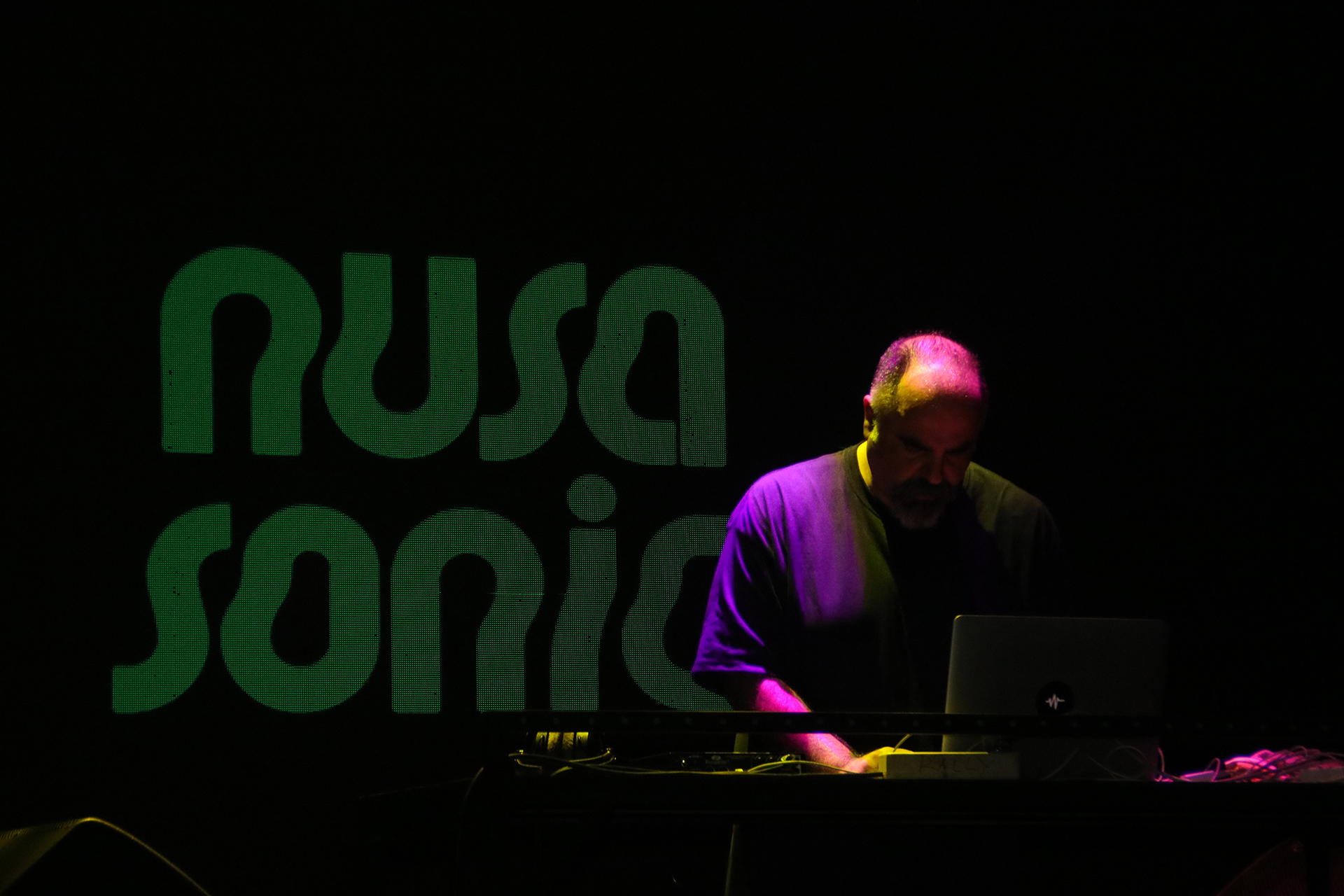
Foto: Reyhan Reynardo
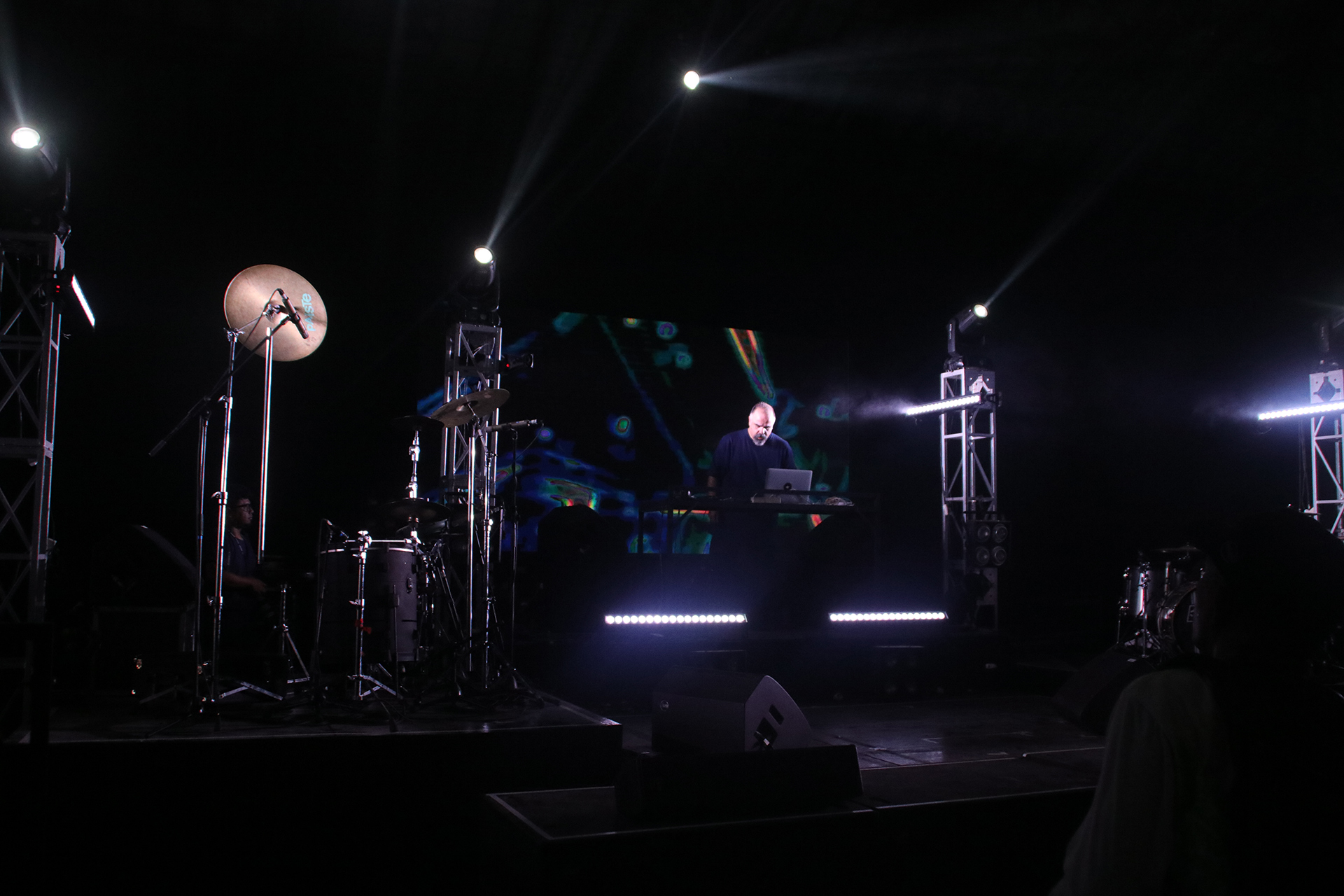
Foto: Reyhan Reynardo

Foto: Reyhan Reynardo

Foto: Reyhan Reynardo

Foto: Reyhan Reynardo

Foto: Reyhan Reynardo
Foto: Reyhan Reynardo
Your works can’t be separated from your own experience as a person whose rooted in many cultures at once. How do you see people nowadays who tend to put forward a single identity?
I don’t know, maybe because I have lived in three parts of the world, I can kind of bypass culture and not be locked into just one culture, and look beyond it, I don’t know. Maybe that’s the reason, maybe not, maybe it’s because of the way I am. Either way, what I believe is, because of the way everything is going, because of the internet and travelling and just the way we live these days, things are going to be okay in that regard. Because people are going to be more and more exposed and then they are gonna realise they don’t necessarily have to have that one single identity or be stuck with one identity. Why not take the good parts from different places and make your own culture? Because that’s what I try to do.
Why not take the good parts from different places and make your own culture? Because that’s what I try to do.
If you listen to the music that I’m gonna perform tonight (12 November 2018), it’s very hardcore, it’s very rhythmic. But you know what the main inspiration of that concept has been for a long time, it’s gamelan music. What I’m going to say is, this is my first time in Indonesia, but I look, I see what’s interesting, what has meanings to me, and I get inspired by it. And I don’t think you have to necessarily get stuck only within your own culture and think you have to only explore that. I mean it’s a beautiful thing if you want to do it, but I think if you get stuck in it, it’s very dangerous – artistically. Because I think you’ll end up becoming a formula, and I don’t like formulas. I think I always have to break formulas even for my own work. A lot of times when I see that something is becoming a formula, I quickly try to break it and go against my own rules. So, I think people have to be a little bit more open, try to stay open, and it will be fine.
I’ve been talking to Jan (CTM Festival) about it last night. It’s natural, a lot of younger artists are rejecting the Iranian culture and they don’t want to necessarily have any Iranian elements in their music because they don’t think that should be their identity. It should be something international. But again, I don’t think if you consciously reject or accept anything, it can be dangerous, it should not be a formula. But how can you reject your own culture? You shouldn’t. But if you take it as an inspiration, that doesn’t mean that you have to get stuck with it and do that purely the way the tradition has been telling you to do for a long time. A lot of times that’s just misunderstandings that people make for themselves.
Having yourself to be part of Nusasonic here in Yogyakarta, how does it feel to be able to expose your heavily Iranian-inspired music to varied experimental electronic music enthusiasts in Indonesia?
The music that I’m gonna perform is not heavily Iranian-influenced tonight at all. That’s not that project. The “Sacred Horror in Design” project is with Iranian musicians and visual artists. This one is more like my all-electronic, all-synthetic, non-Iranian music. There’s definitely some Iranian elements and micro tunings, and things like that there. But it’s definitely not heavily Iranian-influenced at all. If I would say, it’s actually somewhat gamelan-influenced. But it feels good, it’s great to come here and expose my work to this part of the world. I’m very excited.
You are also a co-founder of SET Festival in Tehran, what is the importance of making the festival?
It’s very important. As like I said earlier, we started this festival to provide a platform for ourselves to perform and the next step was to provide a platform for other artists to be able to perform. We don’t do just concerts, we also do lectures, workshops, talks. We try to basically not only entertain people but also make people aware and educate them. It’s great, SET Festival is an all-artist run festival. There are 10 of us, we are all audiovisual artists, either musicians or visual artists or both. It’s purely independent and it’s been wonderful.
After you release “Scared Horror in Design”, what is your next project?
But how can you reject your own culture? You shouldn’t.
Actually it’s another Iranian electro-acoustic, but very different from “Sacred Horror in Design”. In a way, it’s a continuation, but completely sounds different. I’m very excited when it’s done. It could have come out this year, but because I’ve started my own label recently, time-wise, we decided not to have it released this year to concentrate more on my labels’ release – my label’s called “Zabte Sote”, by the way. It’s going to come out either January or February 2019. It’s going to be called “Parallel Persia”.
I decided to do this new label which would focus only on releases by Iranian experimental electronic musicians. Not only from Iran, but from all over the world. And the first release that just got released is a compilation with 40 different artists, it’s a big compilation. The physical format is 4 cassette tapes in one box, and it’s got a beautiful packaging. And I’m doing “Zabte Sote” with the label Opal Tapes from U.K. and Opal Tapes is basically going to be the parent label. So “Zabte Sote” is gonna be the sub-label of Opal Tapes. And the reason why I’m doing it with Opal Tapes is because I cannot run a label from within Iran because of the sanctions. We cannot have any international bank transactions, we cannot have any distribution, so Opal Tapes is going to help with the distribution and the production of everything, and I’m going to basically do the artistic direction and the curation of the label. And after this compilation, which just came out, I’m going to start releasing albums by different artists, Iranian artists.
–
Nusasonic is a multi-year project that plunges into a broad spectrum of experimental sound and music cultures in Southeast Asia, enabling dialogue within the region, with Europe, and beyond. Initiated by Goethe-Institut, and collaboratively created by Yes No Klub (Yogyakarta), WSK Festival of the Recently Possible (Manila), Playfreely/BlackKaji (Singapore), and CTM Festival for Adventurous Music & Art (Berlin).
